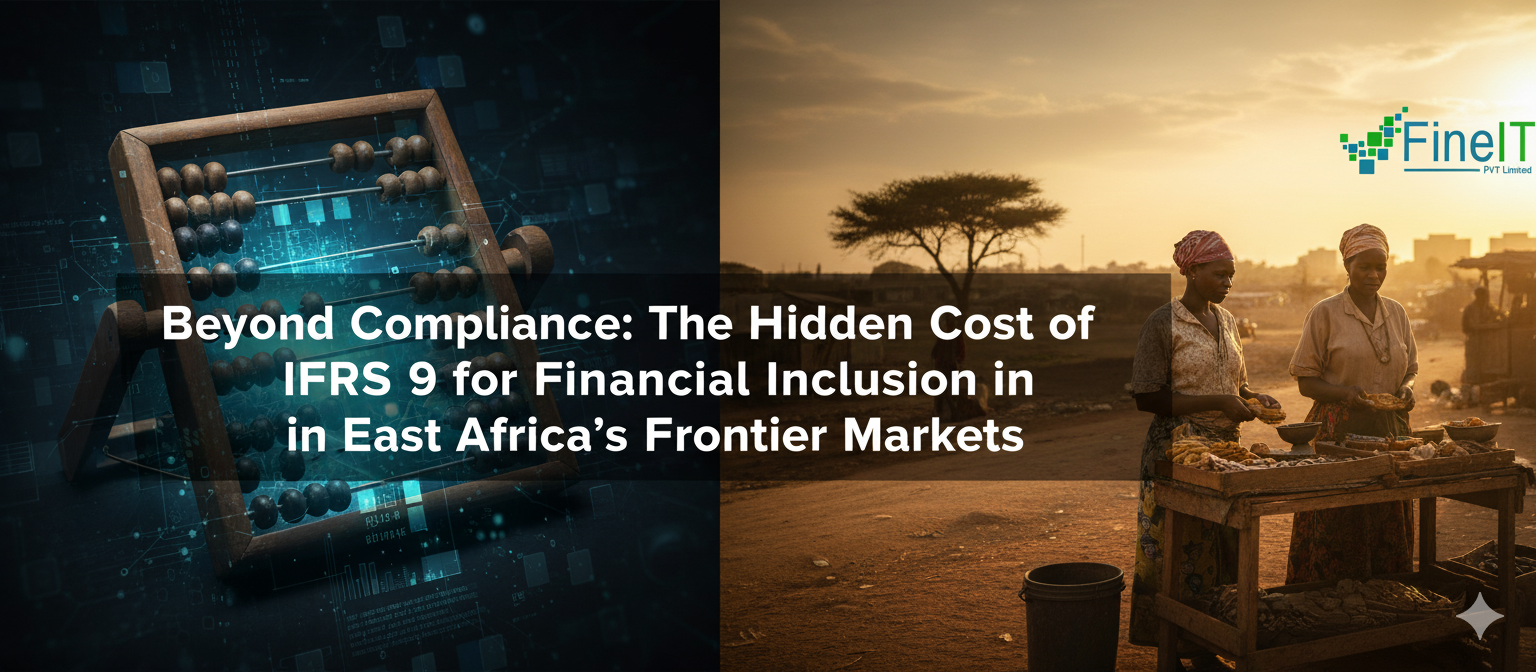The global financial system thrives on stability, and accounting standards like International Financial Reporting Standard 9 (IFRS 9) are designed to bolster it. Introduced in the wake of the 2008 financial crisis, IFRS 9 mandates a forward-looking “Expected Credit Loss” (ECL) model, requiring banks to provision for potential loan losses much earlier than before. The aim is clear: prevent “too little, too late” provisioning and strengthen financial institutions against future shocks.
While laudable in its intent, IFRS 9’s application in East Africa’s dynamic, yet often fragile, frontier markets reveals a complex interplay between global prudence and local development needs. Beyond the obvious compliance costs, there’s a hidden cost: a subtle yet significant impact on financial inclusion, particularly for the vital Small and Medium-sized Enterprise (SME) sector.
The Theory vs. The Terrain: Why East Africa is Different
IFRS 9 demands sophisticated credit risk modeling, requiring extensive historical data, advanced analytical capabilities, and robust IT infrastructure. These are luxuries often in short supply across East Africa.
- Data Scarcity: Reliable, long-term historical data on credit defaults, particularly for SMEs and individuals in the informal sector, is fragmented or non-existent. This makes it incredibly challenging for banks to build accurate Probability of Default (PD), Loss Given Default (LGD), and Exposure at Default (EAD) models.
- Technological & Human Capital Gaps: Implementing complex ECL models requires significant investment in IT systems and a scarce pool of highly skilled quantitative analysts and data scientists. This burden disproportionately affects smaller, local banks that serve the grassroots economy.
- Economic Volatility: East African economies are often subject to external shocks (commodity price fluctuations, climate change impacts, political instability) that can rapidly alter credit risk profiles. Projecting “expected” losses in such unpredictable environments becomes a highly subjective exercise.
The “Hidden Cost”: Squeezing the SME Growth Engine
The immediate consequence of these challenges is a heightened perception of risk by banks, leading to a conservative approach to lending.
- Higher Cost of Credit: To compensate for the increased upfront provisioning required under IFRS 9 and the uncertainty in modeling, banks often pass on these costs to borrowers through higher interest rates. SMEs, already operating on thin margins, find credit becoming less affordable.
- Tightened Lending Criteria: Banks become more selective, demanding greater collateral, stricter repayment histories, and more rigorous business plans. This effectively “de-risks” their portfolios but at the expense of excluding potentially viable SMEs that don’t fit the new, more stringent criteria.
- Reduced Credit Availability: Faced with higher capital charges for perceived riskier loans (which often include SMEs), some banks opt to reallocate capital to less risky segments (e.g., large corporates, government securities). This effectively crowds out SMEs, starving them of the capital needed for growth and expansion.
- Impact on Financial Inclusion: For many in East Africa, formal credit from banks is a pathway out of poverty and a crucial enabler of entrepreneurship. By inadvertently limiting access to credit, IFRS 9 can slow the pace of financial inclusion, hindering job creation and broad-based economic development.
The Paradox: Stability Undermining Growth?
The irony is striking: a standard designed to foster financial stability could, in East Africa, unintentionally impede the very economic dynamism needed to build long-term resilience. SMEs are the backbone of East African economies, driving innovation, employment, and local value creation. Restricting their access to finance creates a procyclical effect, making economic downturns more severe and recovery slower.
Beyond Compliance: A Call for Proportionality and Innovation
Addressing this hidden cost requires a multi-pronged approach:
- Regulatory Nuance: East African central banks and financial regulators need to consider proportionality frameworks. This means allowing for simpler, yet robust, ECL models for smaller institutions or specific asset classes (like microfinance or SME loans) where data limitations are severe.
- Capacity Building: Investment in training for financial professionals in quantitative risk modeling and data analytics is crucial. This can be supported by regional collaborations and development finance institutions.
- Technological Leapfrogging: Leveraging new technologies like mobile money data, alternative credit scoring, and AI/machine learning can help overcome data scarcity. FinTech partnerships can provide innovative ways to assess risk for underserved segments.
- Dialogue and Collaboration: Continuous dialogue between regulators, banks, and development partners is essential to share best practices, identify unintended consequences, and co-create solutions that balance financial prudence with inclusive economic growth.
Conclusion:
IFRS 9 is a global standard with a vital role in ensuring financial resilience. However, its implementation in East Africa’s frontier markets must move “beyond compliance” to thoughtfully address its hidden costs. Only then can the region fully unlock its entrepreneurial potential and achieve truly inclusive economic growth, without sacrificing the stability that the standard seeks to uphold.



